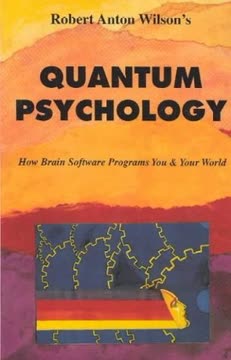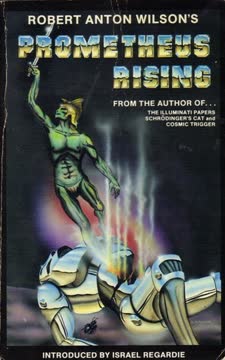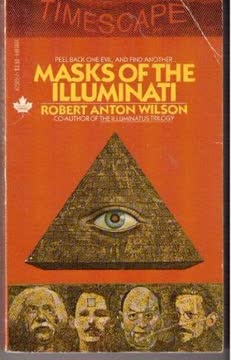Key Takeaways
1. Your Nervous System Programs Your Perceived Reality
Wilson sets the stage by making it clear that all fields of science should be properly prefaced with the term “neuro”; i.e. “neuro-physics,” “neuro-chemistry,” “neuro-astronomy,” etc.
Neuro-prefixed reality. Every perception, measurement, and understanding of the universe is filtered through the human nervous system. We don't experience "deep reality" directly, only "existential reality" as processed by our senses and instruments. This means our understanding of physics, chemistry, or astronomy is always neuro-physics, neuro-chemistry, neuro-astronomy, etc.
No pure observation. Even studying the nervous system itself is filtered through the nervous system, leading to "neuro-neuroscience." This highlights that the observer is inextricably linked to the observation, a core principle shared by quantum physics and neuroscience. Our biological hardware and software (language, culture) impose a bias on everything we perceive.
Brain science parallels quantum physics. Understanding how the brain processes information, with its inherent filters and interpretations, provides a better foundation for grasping the weirdness of quantum theory than classical physics does. Both fields reveal that our traditional notions of an objective, external reality are incomplete or misleading.
2. Perception Is Active Interpretation, Not Passive Reception
Wilson makes the point, multiple times in multiple ways, that perception isn’t a passive process, but rather, is “an active interpretation of signals.”
Creative sensory processing. What we see, hear, taste, touch, and feel isn't just raw data entering the brain; it's a creative act where the brain actively interprets incoming signals. Every person is an artist, constantly constructing their view of the world based on these interpretations.
Observer-created universe. This active interpretation parallels the quantum physics principle that "the observer cannot be left out of the description of the observation." Some physicists, like Dr. John A. Wheeler, even suggest the observer "creates" the universe of observation. Our instruments, like our senses, also shape what is perceived.
Gambles, not certainties. Perception is based on unconscious assessments of probabilities, essentially making every perception a gamble. We organize signals into guesses so fast we don't notice the guessing, leading to premature certainty about what we "see," even when others perceive the same event differently.
3. Language, Especially "Isness," Creates Mental Traps
For instance, much of this book will attempt to show that every sentence containing the innocent-looking word "is" also contains a hidden fallacy.
Confusing map and territory. Humans are prone to confusing words (the map) with the non-verbal world (the territory). We react to labels as if they were the things themselves, leading to semantic delusions and conflicts over abstract concepts defined by language.
The fallacy of identity. The word "is" of identity (e.g., "X is a Y") implies a fixed, inherent "essence" or "thingness" that doesn't exist in the dynamic, probabilistic universe described by modern science and existentialism. This Aristotelian habit leads to dogmatic thinking and prevents understanding flux and multiple perspectives.
Examples of "isness" traps:
- Debating whether a fetus "is" a person.
- Classifying someone as "a homosexual" or "a thief" based on past actions, ignoring potential for change.
- Believing a town "is really" Derry or Londonderry, leading to violence.
- Assuming something "is" indecent or sacred based on linguistic taboo.
4. E-Prime: A Tool for Non-Aristotelian Thinking
In 1933, in Science and Sanity, Alfred Korzybski proposed that we should abolish the "is of identity" from the English language.
English without "isness." E-Prime (English-Prime) is a version of English that eliminates all forms of the verb "to be" ("is," "am," "are," "was," "were," etc.). This forces speakers and writers to use more operational and existential language, describing experiences and relationships rather than asserting fixed identities or essences.
Escaping medieval metaphysics. Removing "isness" shifts thinking from an Aristotelian framework of fixed "things" with indwelling "spooks" (essences) to a modern scientific/existential framework of processes, relationships, and experiences in space-time. This helps avoid meaningless debates about what things "are."
Clarifying perception and conflict. Rewriting statements in E-Prime often dissolves apparent contradictions and reduces conflict. For example, instead of "John is unhappy," one might say "John appears unhappy in the office," acknowledging the observer's perception and the context, rather than asserting a fixed state of being.
5. We Have Multiple Selves and Reality-Tunnels
The Russian mystic Gurdjieff claimed that we all contain multiple personalities. Many researchers in psychology and neuroscience now share that startling view.
State-specific information systems. Modern psychology and neuroscience suggest that humans don't have one single, fixed "self" or "ego," but rather multiple potential "selves" or "information systems." These systems are linked to different brain states and access different memories and perspectives.
Four main systems:
- Oral Bio-Survival: Infancy imprints (neophobia/neophilia), linked to security and basic trust.
- Anal Territorial: Toddler imprints (dominance/submission), linked to power and control.
- Semantic Time-Binding: Language acquisition, linked to logic, symbolism, and cultural reality-tunnels.
- Socio-Sexual: Puberty imprints, linked to mating, social roles, and ethics.
Shifting realities. When one of these internal systems becomes predominant, the individual's perception of the world (their "reality-tunnel") shifts accordingly. This explains why a person might seem like a different person in different contexts or moods, and why their memories and beliefs might appear inconsistent.
6. Beliefs and Expectations Shape Physical Reality
Medical researchers know that every innovative therapy produces its best results when new, and some therapies only produce results when new.
Self-fulfilling prophecies. Our beliefs and expectations, whether conscious or unconscious, can significantly influence outcomes in the physical world, particularly concerning health and behavior. Treating someone as guilty can make them act uncomfortable; expecting a therapy to work can trigger healing processes.
Psychosomatic synergy. The traditional "mind-body problem" dissolves when viewed through the lens of psychosomatic unity and information transduction. Beliefs (information processed semantically in the cortex) can be transduced into biochemical and hormonal signals (information processed somatically via the hypothalamus and neuropeptides), affecting the immune system and physical health.
Placebo and nocebo effects. The power of belief is evident in the placebo effect (positive expectation leading to healing) and the nocebo effect (negative expectation leading to harm or death, like the "death bone" curse). Studies show placebos can be over 50% as effective as real drugs for pain relief, and optimism correlates with longevity.
7. Uncertainty and Probability Are Fundamental to Experience
The physicist states that in many cases we cannot meaningfully call Schrödinger's cat "a dead cat" but only "probably dead" and the Transactional Psychologist says that in many cases we cannot call the Thing in the Corner a chair but "probably a chair."
Beyond true/false. Modern science and logic move beyond the Aristotelian two-valued system of "true" or "false." Quantum mechanics and transactional psychology operate in a realm of probabilities and "maybes." Things exist in indeterminate states until observed or measured.
Daily life uncertainty. This uncertainty isn't confined to the subatomic world; it's present in daily life. Perceptions begin as "maybes" (e.g., is that figure Joe or someone else?) and often remain indeterminate if not fully resolved. Our brains, however, tend to leap to premature certainty due to Aristotelian habit.
Statistical reality. Accepting probability doesn't mean descending into chaos or solipsism. It means graduating from rigid "yes/no" thinking to assessing odds (5%, 50%, 95%). Business, like physics, operates on calculated risks and probabilities, not absolute certainty.
8. Non-Locality and Strange Loops Challenge Our Understanding
Bell's Theorem indicates that nonlocal correlations in time must also appear in a quantum universe.
Correlation without connection. Bell's Theorem suggests that if quantum mechanics accurately describes the universe, non-local correlations must exist. These are correlations between events that happen instantaneously across distances, without any known causal connection or signal traveling between them, defying classical physics.
Backward causality? Some interpretations of quantum experiments, particularly those involving non-local correlations in time, suggest that events in the present might influence the properties of particles in the past. This challenges our linear understanding of cause and effect.
Strange loops and infinite regress. Analyzing perception or consciousness rigorously leads to "strange loops" and infinite regresses (e.g., perceiving that you perceive that you perceive...). This mirrors Von Neumann's Catastrophe in quantum mechanics, where adding more observers or instruments doesn't eliminate uncertainty, suggesting a fundamental limit to objective knowledge.
Last updated:
FAQ
What is "Quantum Psychology: How Brain Software Programs You & Your World" by Robert Anton Wilson about?
- Explores Perception and Reality: The book investigates how our nervous system and brain software shape our perception of reality, drawing parallels between quantum physics and psychology.
- Challenges Certainty and Objectivity: Wilson argues that what we consider "reality" is filtered through our neurological and linguistic systems, making objectivity and certainty elusive.
- Integrates Science and Mysticism: The book blends concepts from quantum mechanics, neuroscience, Eastern philosophy, and psychology to question traditional notions of truth and existence.
- Offers Practical Exercises: Each chapter includes exercises designed to help readers internalize and experience the principles discussed, making the book interactive and experiential.
Why should I read "Quantum Psychology" by Robert Anton Wilson?
- Mind-Expanding Perspective: The book encourages readers to question their assumptions and habitual ways of thinking, leading to greater psychological flexibility.
- Practical Tools for Communication: Wilson introduces methods like E-Prime (English without "is") to improve clarity and reduce misunderstandings in communication.
- Relevance to Modern Life: The book addresses how information overload, technological change, and cultural conditioning affect our perception and behavior.
- Humor and Accessibility: Wilson’s witty, satirical style makes complex ideas engaging and accessible, even when dealing with advanced scientific or philosophical concepts.
What are the key takeaways from "Quantum Psychology" by Robert Anton Wilson?
- Observer-Dependent Reality: Reality is not fixed but is co-created by the observer’s nervous system, language, and cultural conditioning.
- Embrace Uncertainty: Certainty is an illusion; adopting probabilistic thinking and model agnosticism leads to greater adaptability and open-mindedness.
- Language Shapes Perception: The structure of language, especially the use of "is," can trap us in rigid thinking; using E-Prime can help us see the world more flexibly.
- Multiple Selves and Realities: Each person contains multiple "selves" and reality-tunnels, shaped by genetics, imprinting, conditioning, and learning.
How does Robert Anton Wilson define "reality-tunnels" in "Quantum Psychology"?
- Personalized Perceptual Filters: Reality-tunnels are the unique ways individuals interpret and experience the world, shaped by their nervous system and experiences.
- Influenced by Genetics and Imprinting: Our DNA, early life imprints, and cultural conditioning create the foundational structure of our reality-tunnel.
- Dynamic and Changeable: Reality-tunnels can shift with new information, altered states, or deliberate reprogramming, leading to different perceptions and behaviors.
- Source of Conflict and Creativity: Differences in reality-tunnels explain why people disagree, misunderstand, or innovate in unique ways.
What is the significance of E-Prime in "Quantum Psychology" by Robert Anton Wilson?
- Eliminates "Isness" from Language: E-Prime is English without the verb "to be," which helps avoid the fallacy of absolute identity and static thinking.
- Encourages Operational Thinking: Using E-Prime forces speakers to describe experiences and observations rather than making dogmatic statements about "what is."
- Reduces Misunderstandings: E-Prime clarifies communication by focusing on perceptions and actions, not assumed essences or fixed categories.
- Promotes Flexibility: Adopting E-Prime can help individuals become more open-minded and less prone to ideological or semantic conflicts.
How does "Quantum Psychology" connect quantum physics and psychology?
- Observer Effect Parallels: Both fields recognize that the observer cannot be separated from the observed; perception is an active, creative process.
- Uncertainty and Probability: Quantum mechanics’ indeterminacy mirrors the probabilistic, interpretive nature of human perception and cognition.
- Multiple Models and Truths: Just as quantum physics allows for multiple valid models (wave/particle duality), psychology acknowledges multiple valid perspectives and realities.
- Critique of Aristotelian Logic: Wilson argues that both disciplines benefit from moving beyond either/or logic to embrace multi-valued, probabilistic thinking.
What are the main methods or exercises recommended in "Quantum Psychology" by Robert Anton Wilson?
- Group Experiential Exercises: Each chapter ends with activities designed for group discussion and direct experience of the book’s principles.
- Perspective-Shifting Tasks: Exercises include role reversals, drawing from different viewpoints, and dividing objects by various dualisms to reveal subjective categorization.
- Language Practice: Readers are encouraged to rewrite statements in E-Prime and observe the effects on their thinking and communication.
- Reality-Tunnel Exploration: Activities prompt readers to identify and challenge their own imprints, conditioning, and learned beliefs.
How does "Quantum Psychology" by Robert Anton Wilson address the mind-body problem?
- Psychosomatic Unity: Wilson advocates replacing the dualistic "mind" and "body" with the concept of "psychosomatic synergy" or "organism-as-a-whole."
- Information Theory Approach: He suggests that information processing and transduction between semantic (mental) and somatic (physical) levels explain mind-body interactions.
- Placebo and Belief Effects: The book discusses how beliefs, expectations, and scripts can directly influence physical health and healing.
- Critique of Dualism: By adopting a holistic, systems-based view, Wilson dissolves the traditional philosophical mind-body split.
What is the 8-circuit model of consciousness discussed in "Quantum Psychology"?
- Originated by Timothy Leary: The model proposes eight basic circuits or systems in the human brain, each corresponding to different stages of development and types of intelligence.
- First Four Circuits: Focused on survival, security, power, and social/sexual roles, largely shaped by genetics and early imprinting.
- Higher Circuits: The later four circuits relate to neurosomatic awareness, metaprogramming, collective consciousness, and non-local quantum awareness.
- Evolutionary Perspective: Wilson and Leary suggest that activating higher circuits leads to expanded consciousness and future human evolution.
How does "Quantum Psychology" by Robert Anton Wilson critique traditional logic and language?
- Critique of Aristotelian Logic: Wilson argues that either/or, true/false logic is inadequate for describing the complexities of perception and quantum phenomena.
- Semantic Noise and Miscommunication: He highlights how language, especially the "is of identity," introduces confusion and conflict.
- Advocacy for Multi-Valued Logic: The book promotes quantum logic, which includes "maybe" and indeterminate states, as more accurate for both science and daily life.
- Emphasis on Model Agnosticism: Wilson encourages skepticism toward all models and labels, advocating for flexible, context-dependent thinking.
What are the best quotes from "Quantum Psychology" by Robert Anton Wilson and what do they mean?
- "The map is not the territory." — Reminds us that our mental models and language are not the same as reality itself.
- "Perception is an active interpretation of signals." — Emphasizes that we create our experience of reality, rather than passively receiving it.
- "We can never even have a pure form of neuroscience — the study of the nervous system. Rather, we can only have 'neuro-neuroscience' — the study of the nervous system as perceived by the nervous system!" — Highlights the recursive, self-referential nature of all knowledge.
- "Nothing 'is' anything at all, and 'reality' always becomes multiple." — Underscores the book’s central theme of uncertainty, multiplicity, and the limitations of static definitions.
What practical advice does "Quantum Psychology" by Robert Anton Wilson offer for daily life?
- Practice E-Prime: Use language that describes experiences and perceptions rather than making absolute statements, to reduce conflict and increase clarity.
- Embrace Uncertainty: Accept that certainty is often an illusion and approach life with probabilistic, open-minded thinking.
- Question Your Reality-Tunnel: Regularly examine your own beliefs, imprints, and conditioning to become more adaptable and empathetic.
- Engage in Experiential Learning: Apply the book’s exercises with others to internalize its principles and foster personal growth.
Review Summary
Quantum Psychology received mostly positive reviews, praised for its mind-expanding ideas and challenge to conventional thinking. Readers appreciated Wilson's humor, accessible writing style, and exploration of quantum theory in relation to psychology and perception. Many found the book transformative, offering new perspectives on reality and consciousness. Some criticized it for occasional arrogance or lack of scientific rigor. The exercises and concepts like E-Prime language were highlighted as particularly valuable. Overall, it was seen as a thought-provoking work that encourages readers to question their assumptions and expand their worldview.
Similar Books
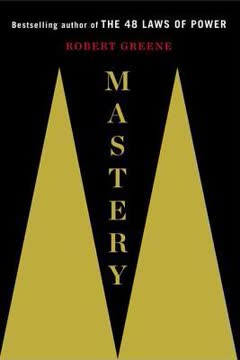
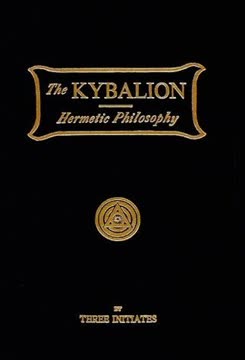

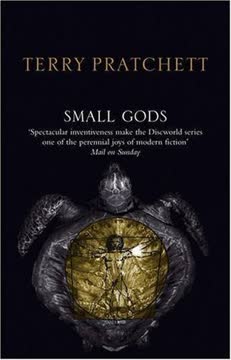
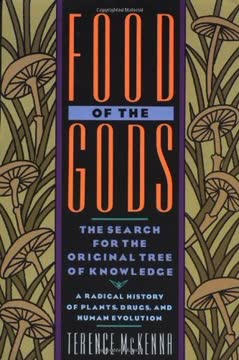
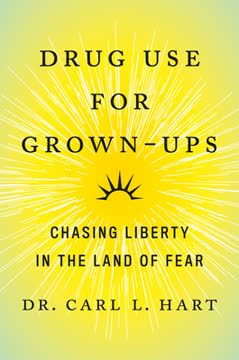

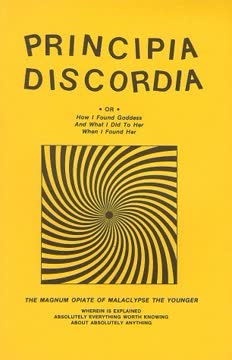
Download PDF
Download EPUB
.epub digital book format is ideal for reading ebooks on phones, tablets, and e-readers.
